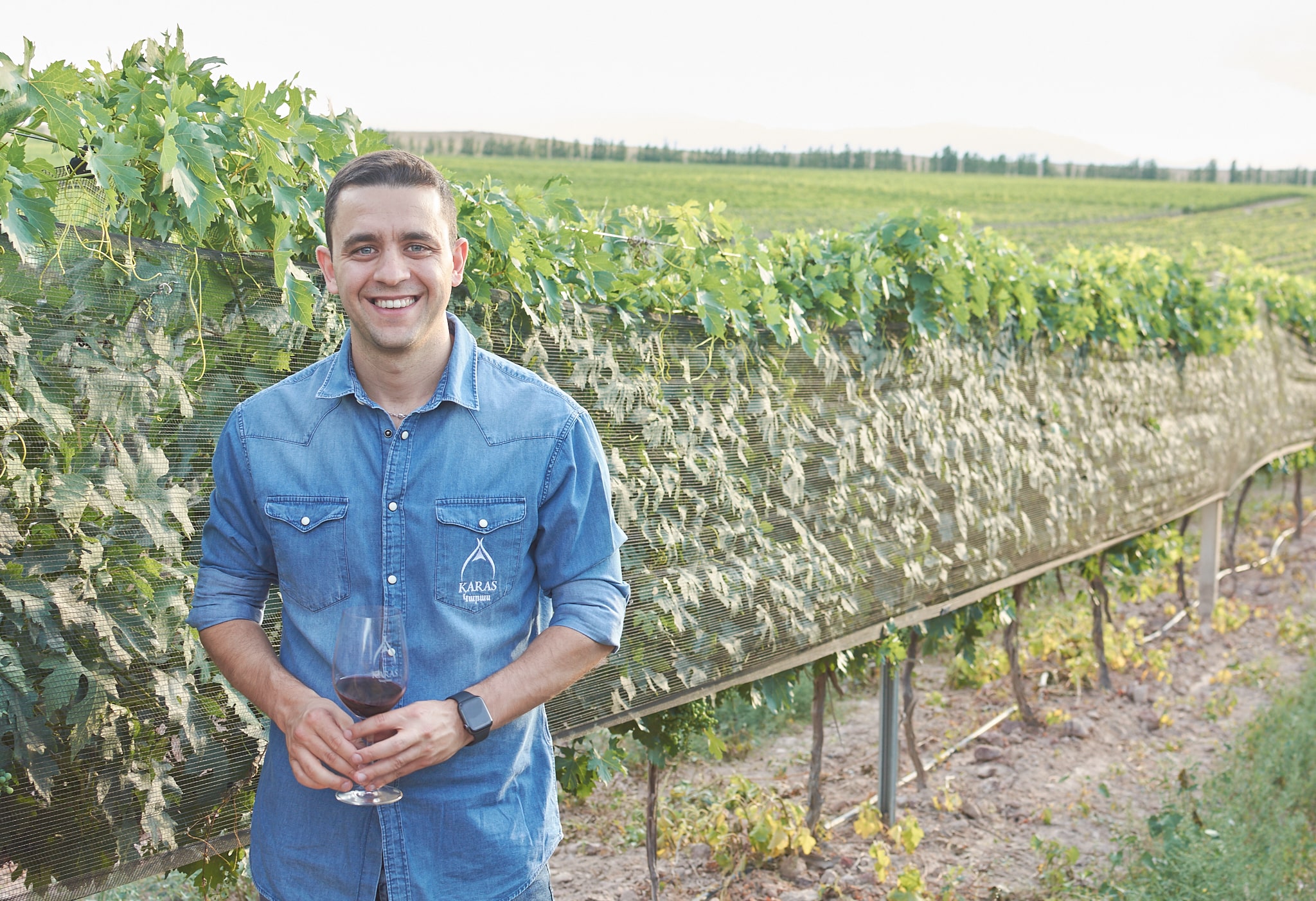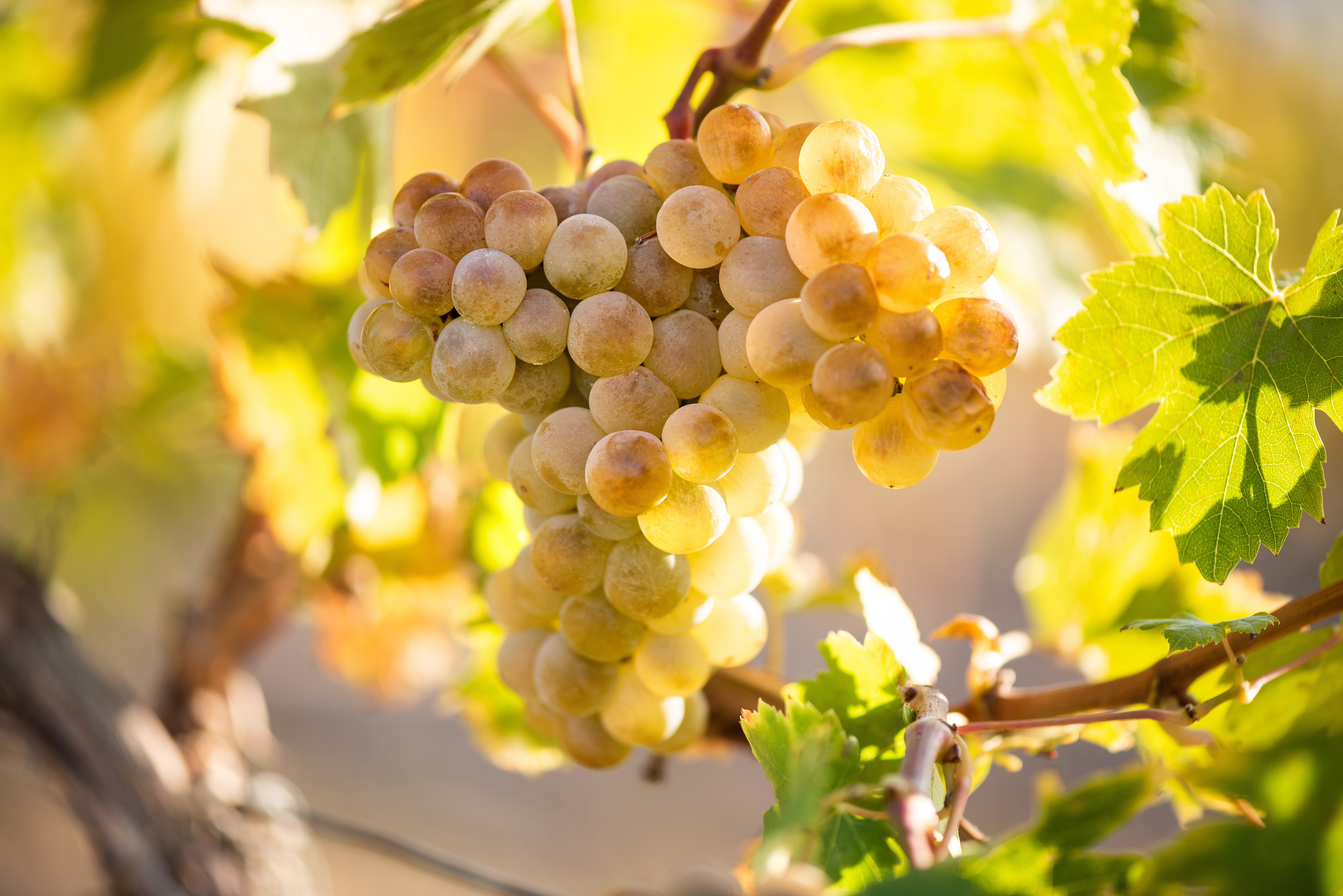Armenia’s Promising Future Through the Eyes of an MW
- By Gabe Ouzounian
- Translated by
- 26 August, 2022
Armenia’s winemaking history is one that stretches back over 6,000 years. Yet it's not just this history that makes Armenia a new hotspot for wine enthusiasts and grape growers. Armenia’s unique terroir creates conditions for many autochthonous grape varieties. Voskehat grapes have a cultivation history of over 3,000 years, and translated into English literally means “golden seed.” The thick-skinned grapes are primarily found near the town of the same name, some 12 miles north of the nation's capital of Yerevan. Areni grapes, native to the Vayots Dzor region, are red grapes that have grown in the country for thousands of years and have characterized some of Armenia’s best-known red wines today.
Located in the southwestern portion of the country, Vayots Dzor is the primary grape-growing region for Armenian’s modern winemaking efforts. Here, it’s difficult to avoid the hundreds of vineyards that dot the mountainous landscape, some of which date back to the early 1900s. Experts from premier wine regions around the globe visit the region to consult, advise, or simply study the unique terroir.
One of those visiting wine experts included US-based Master of Wine (MW) Lisa Granik, who came to Armenia to consult with Storica Wines, a US importer of Armenian wines. During a tour of vineyards in Vayots Dzor and Van Ardi in Ashtarak, Granik spent her time cataloging the terroir, taking notes, and snapping pictures of the spring vines. Her task, most like that of other consultants making the trip to the Caucasus, is to learn how Armenian winemakers are using the unique terroir and grape varieties to make wines that capture a slice of the international market.
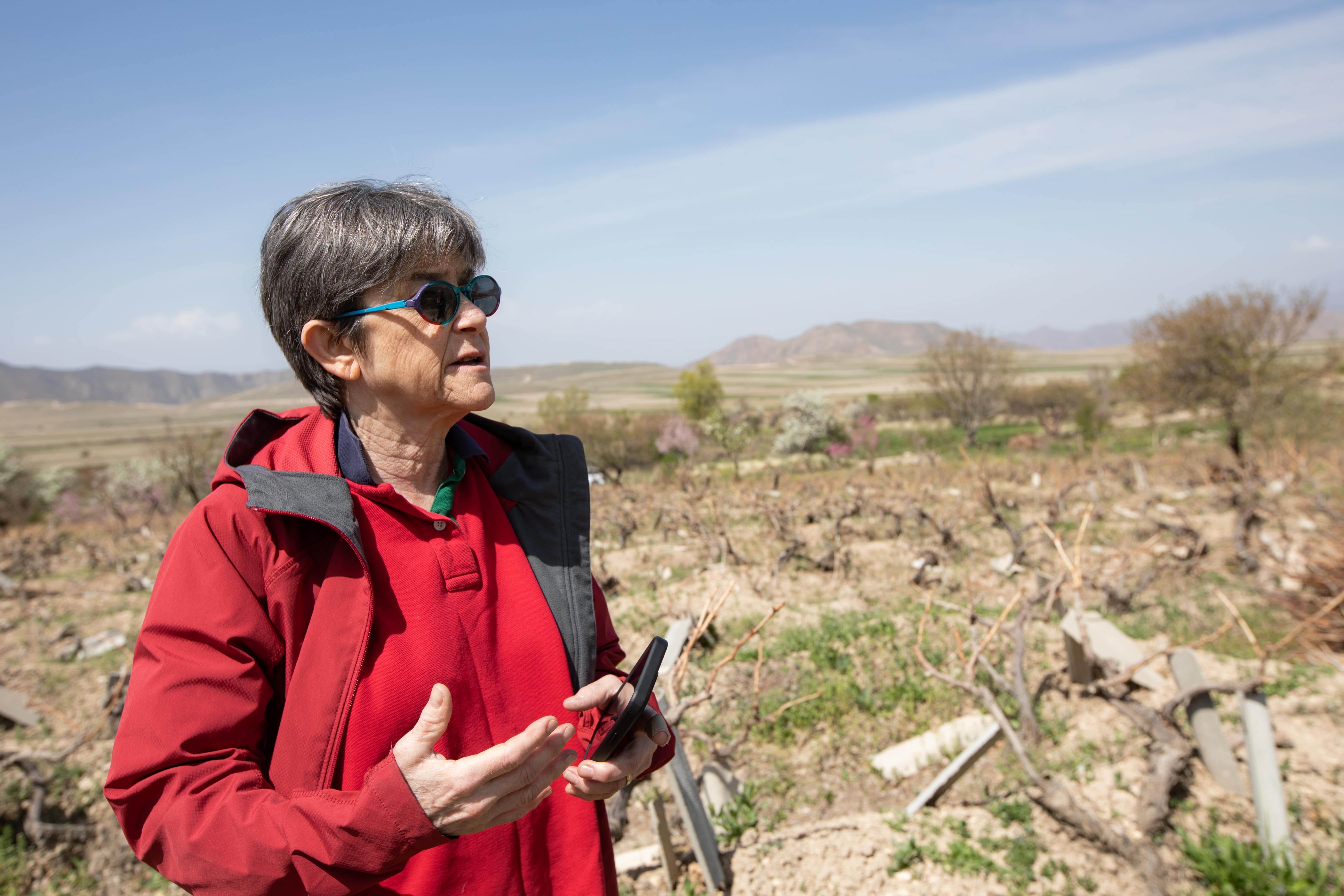 Lisa Granik MW | Photo Credit: Gabe Ouzounian
Lisa Granik MW | Photo Credit: Gabe Ouzounian
“The quality of production [in Armenia] is driven by Armenian producers who have been part of the Armenian diaspora and have lived in [countries like] Italy, Argentina, and California,” said Granik when comparing the Armenian winemaking process to other post-Soviet nations. She continues by saying it has been an important endeavor of Armenian winemakers to travel abroad to globally successful winegrowing regions to integrate that knowledge into the Armenian winemaking philosophy and help understand the terroir in Armenia.
Granik is no stranger to the Caucasus, having worked with wine industry experts in Georgia since the collapse of the Soviet Union in the late 1980s. According to her, an aspect of Soviet winemaking that remains prevalent is the penchant for growing wine in volume rather than pursuing new products or investing in greater quality. She comments that in looking at the winemaking of Georgia, one can easily see that traditional winemaking can be seen as king and is difficult to alter, especially from foreign influence.
Armenia has taken the relatively unusual approach of retooling their understanding of winemaking despite their long history of the craft. Because of this, new wine types have emerged from the different grape varieties found in the country. This experimental approach has intrigued western winemakers and enthusiasts alike, including Granik, who saw Armenian wines produce different results from other post-Soviet winemaking regions.
“What interested me in Armenia was not only already being familiar with the Caucasus but also the notion of having different grape varieties and a clear notion of terroir,” said Granick. “I [organized] a tasting of Armenian wines and felt the consistency in terms of [the] level of quality. Particularly, Areni and Voskehat were appetizing wines that strived for distinction of variety and place. They are elegant, pure wines.”
Armenia’s terroir is, by her description, extreme. Elevations range from 3,280 to 5,249 feet, with extremely hot summers and brutally cold winters. The sharp temperature changes are tempered by swift rivers fertilizing the volcanic soil in valleys and ridges. Besides the Voskehat and Areni noble grape varieties, there are over 100 native Armenian grape varieties, most of which are still unexplored. Add to this that, owing to Soviet time isolation, the dreaded phylloxera is much less prevalent, and it’s clear why the Armenian highlands present such an exciting region for winemakers worldwide.
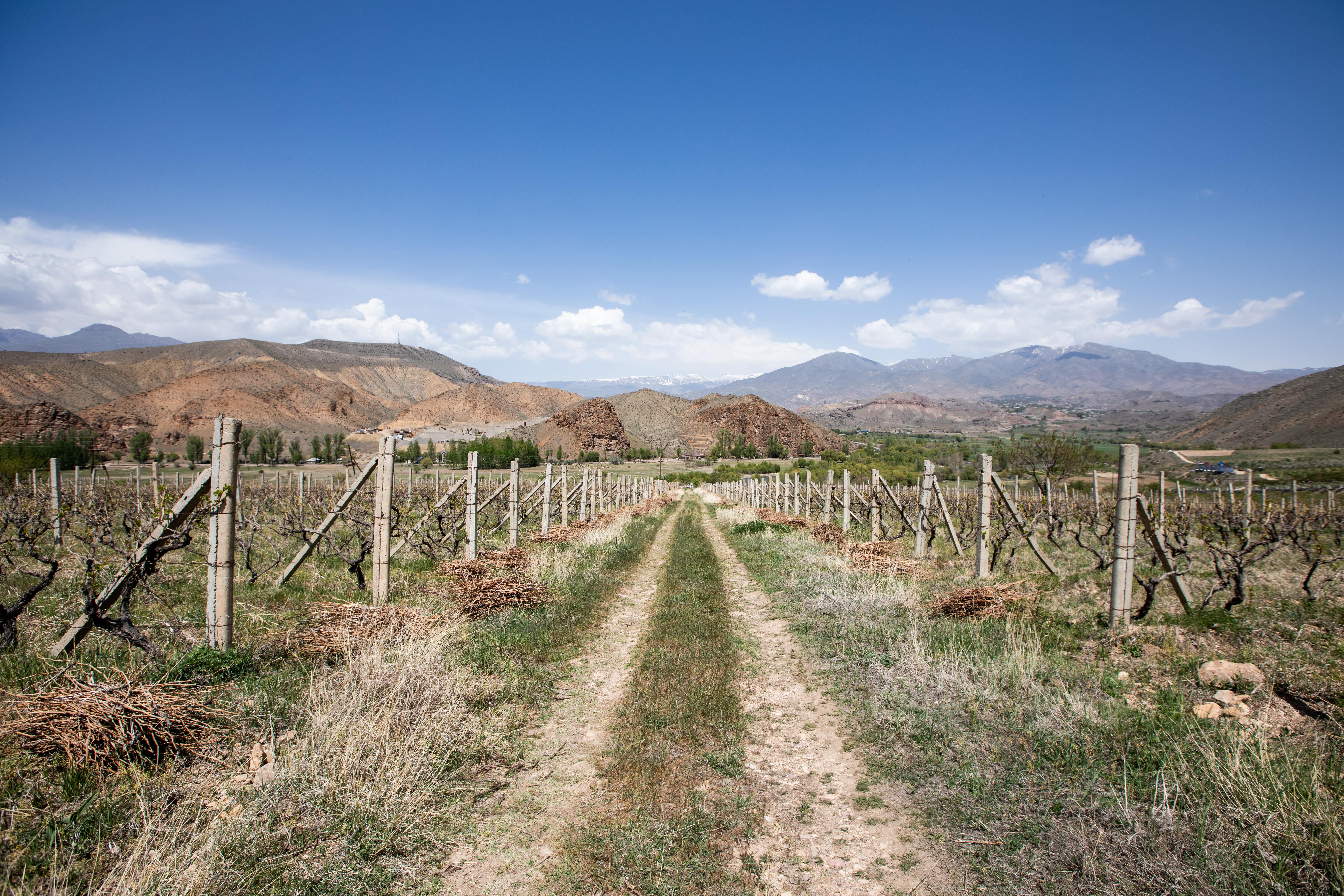 Vayots Dzor | Photo Credit: Gabe Ouzounian
Vayots Dzor | Photo Credit: Gabe Ouzounian
Granik believes that Armenian winemakers have made significant strides in terms of making an impact on the world scene, but that the modern Armenian wine industry is still quite young. Winemaking has been a craft for generations, and because so much work is yet to be done to fully understand the terroir, Armenia is at the beginning of a long game. Fully matured vines of many harvests are the goal of most vineyards, and there is no way to rush this process. Armenian wine companies are only recently awakening to the global market, and most are trying to find their unique expression.
Despite this, she admits that many of the wines she’s experienced in Armenia have piqued her interest with a particular focus on single-varietal indigenous bottlings that don't seem to copy what is popular on the world stage.
This approach seems to suit Armenia as a small nation surrounded by hostile powers. In many ways, the term strength through adversity can define their current approach to winemaking, as Armenia has neither the ability to produce large amounts of wine nor trade easily with interested regions. This has made it necessary to target the fine wine category which values new wine types from unusual terroirs with local grape varieties not found elsewhere. These wine enthusiasts want variety and are interested in wines from unexplored regions.
“You have an example with the Italians who entered the U.S. market and started to over-oak everything, and it all collapsed in the late 90s because these wines didn’t taste like they came from anywhere,” said Granik. “We see a move now in the fine wine industry where you want to be an expression of a place. The consumer isn’t stupid, and if you want your wines to be talked about, you have to offer something unique. Armenia [will never] compete in terms of quantity. Therefore, [they] have to compete in terms of quality.”

Photo Credit: Storica Wines
The Armenian wine industry is new to the world stage but one that many, including Granik, are excited to watch.
“Wine is a link to the past and an expression of the present,” she said. “The world of wine only developed with international trade. It is a way to visit another country in a glass, meet with people from other cultures, and learn about the culture that makes this wine what it is. It’s essentially soft diplomacy.”
Granik is an MW and has worked in the wine industry since 1997.
-
21 December, 2022
-
15 December, 2022
-
30 November, 2022
-
11 August, 2022
Similar Stories
-
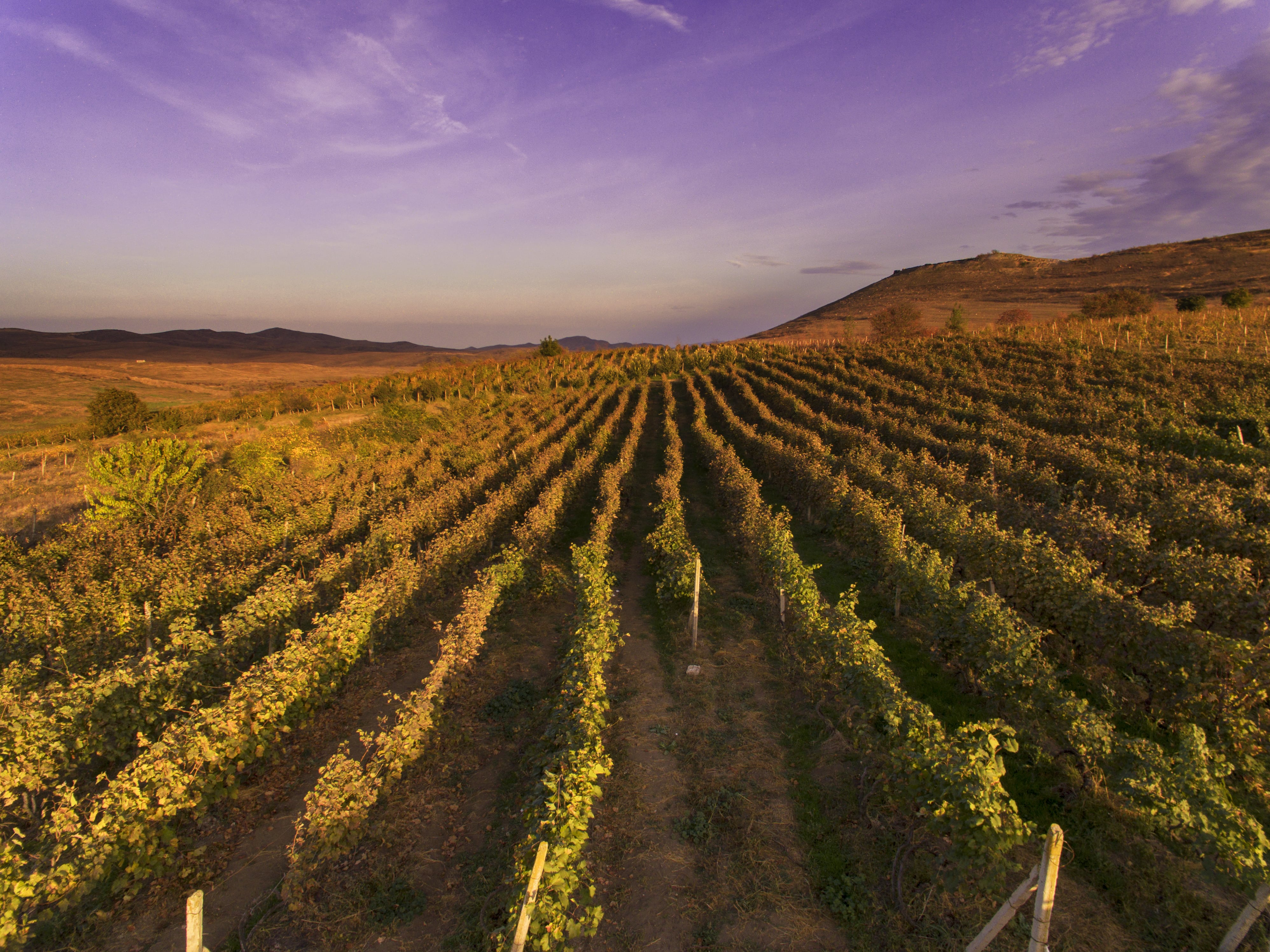 21 April, 2022Rows of vineyards stretch along the fraught border between Armenia and Azerbaijan, and now and then, they even take a bullet. For the community of Berdavan in the province of Tavush, 125 miles (200 km) from Yerevan, many inhabitants make their living exclusively off of these vineyards. Despite the unstable border and deadly crossfire, the vineyards are cultivated with care and what they yield is used to make quality wine.
21 April, 2022Rows of vineyards stretch along the fraught border between Armenia and Azerbaijan, and now and then, they even take a bullet. For the community of Berdavan in the province of Tavush, 125 miles (200 km) from Yerevan, many inhabitants make their living exclusively off of these vineyards. Despite the unstable border and deadly crossfire, the vineyards are cultivated with care and what they yield is used to make quality wine.




